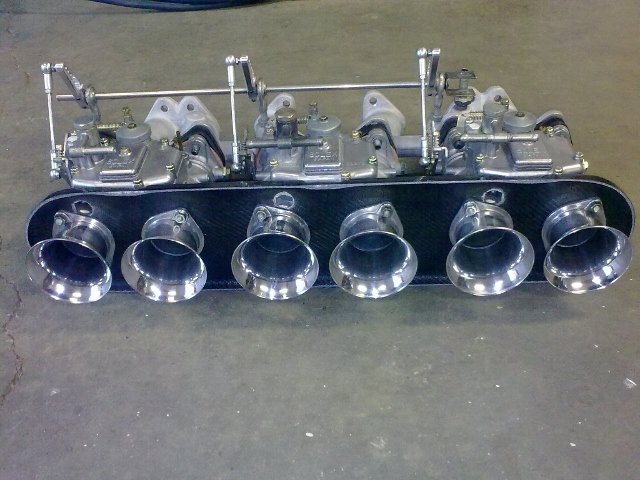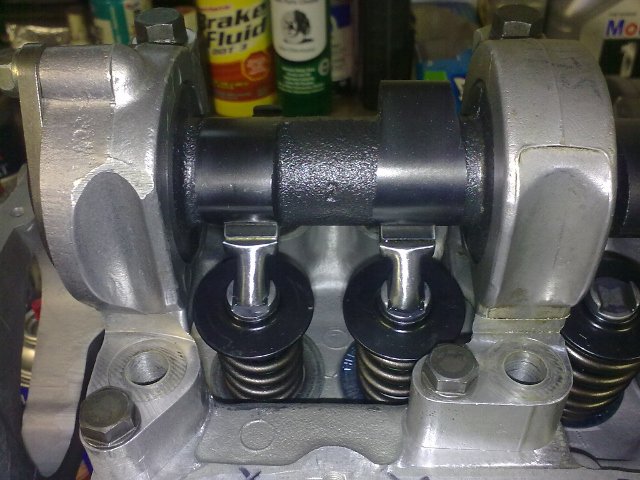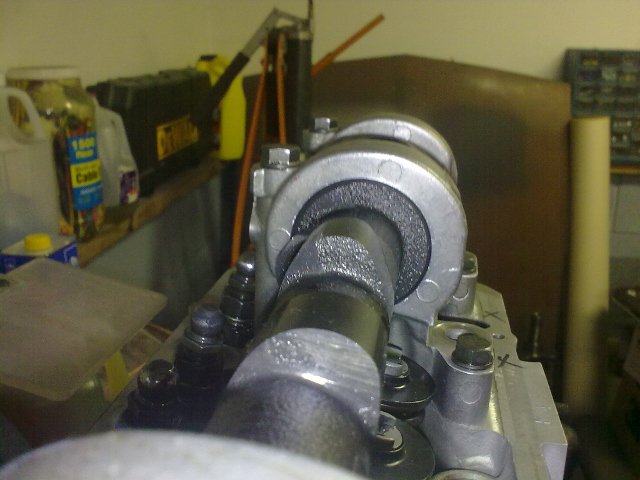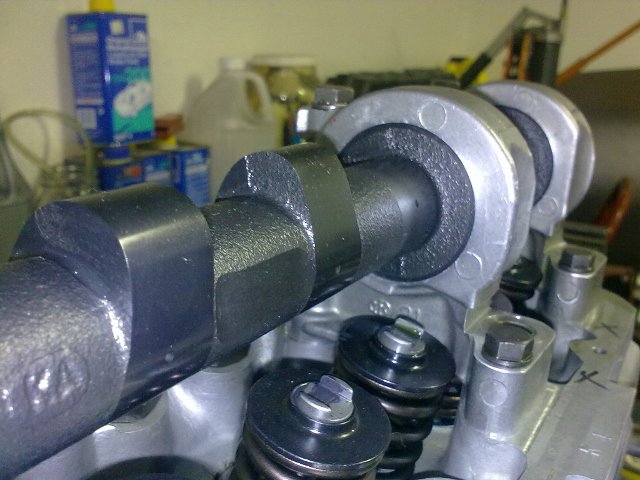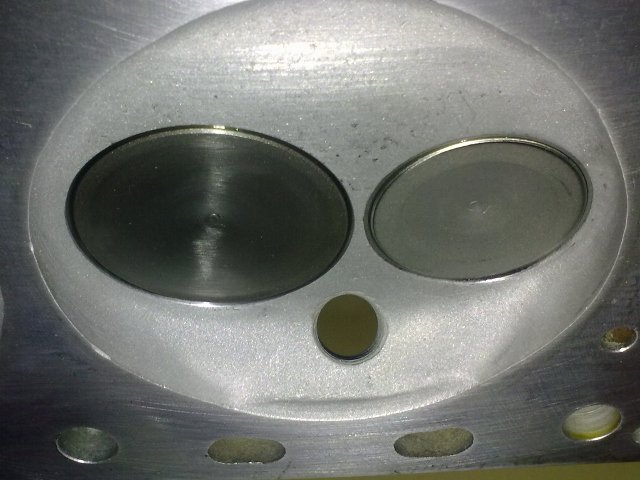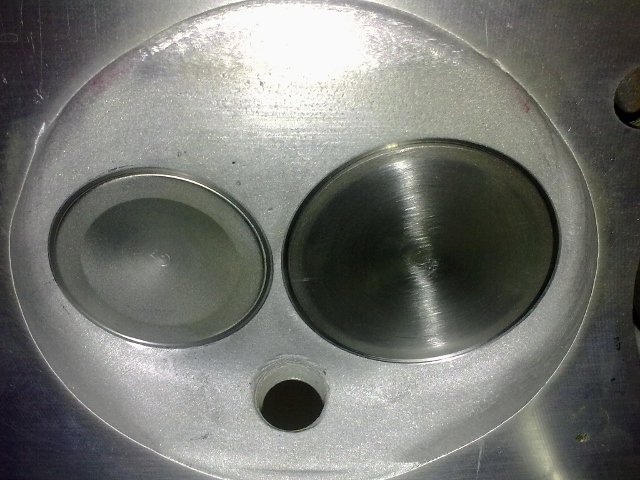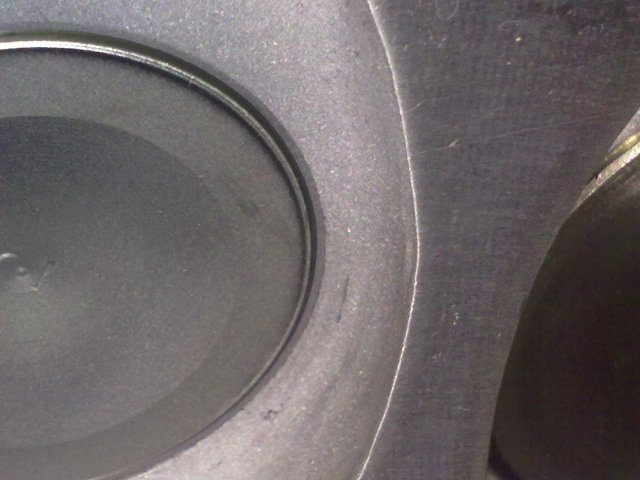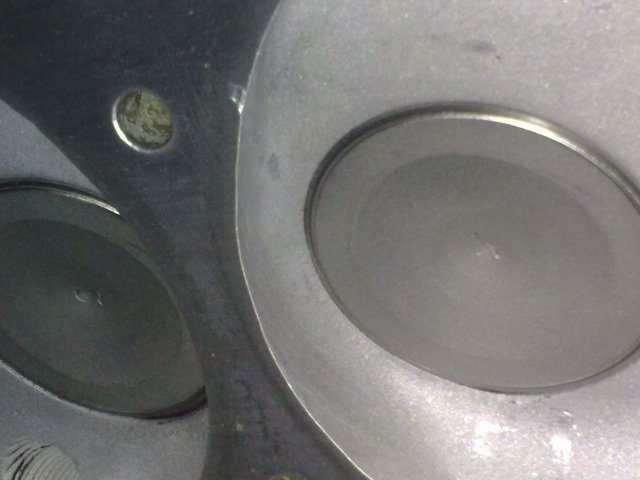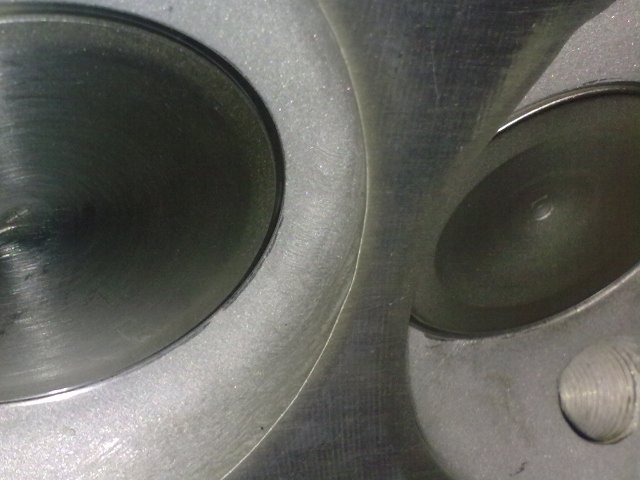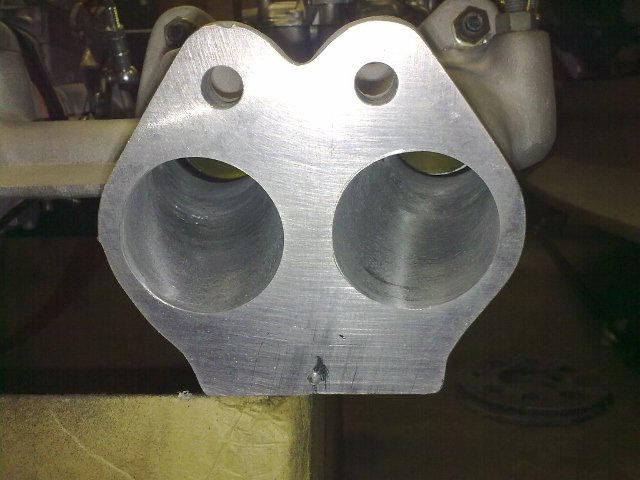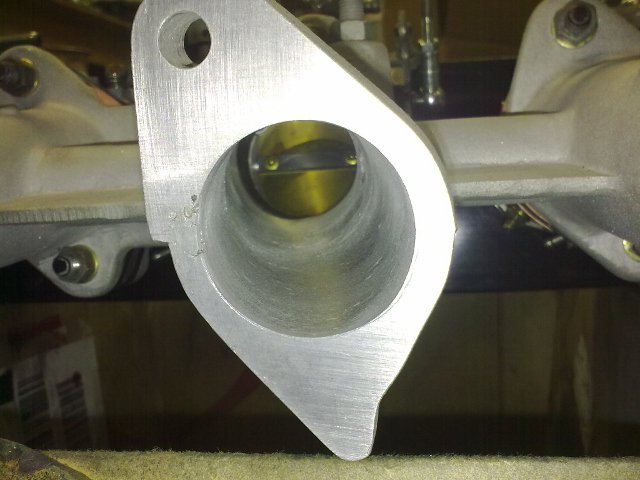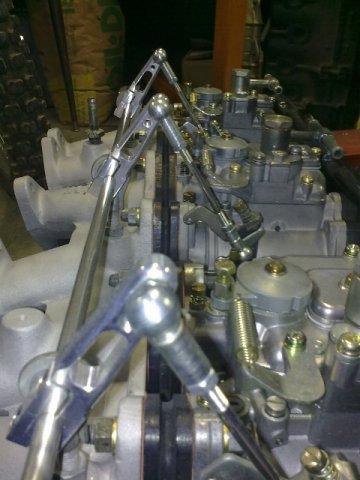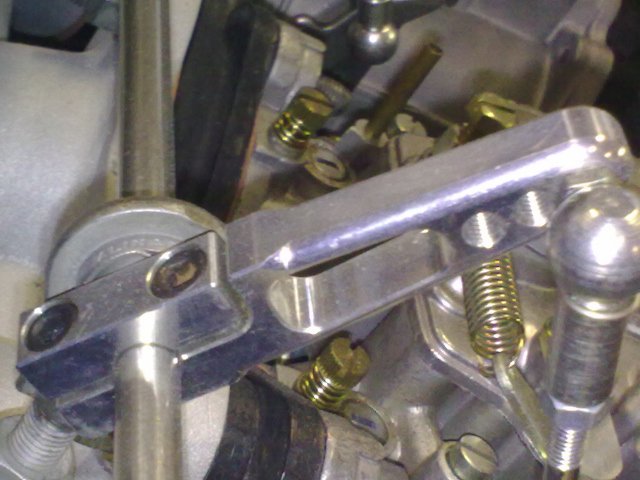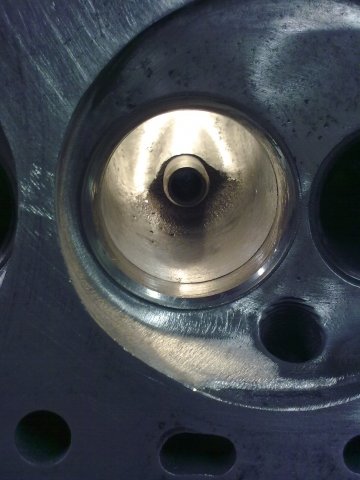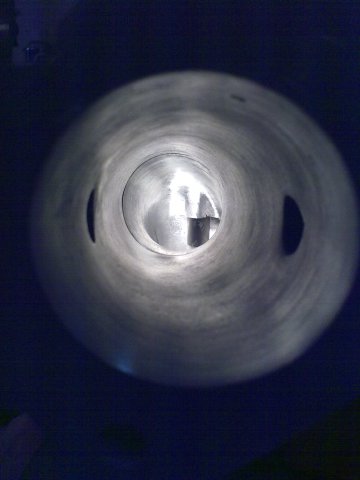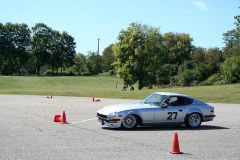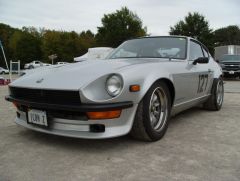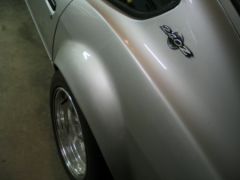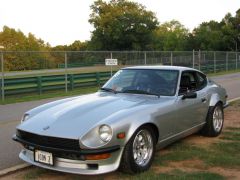-
Posts
456 -
Joined
-
Last visited
-
Days Won
3
Content Type
Profiles
Forums
Blogs
Events
Gallery
Downloads
Store
Everything posted by inline6
-
I'm finally going to be building a full custom engine. I hope to have it built over the next couple of months. I worked all winter on the cylinder head... Porting, unshrouding valves, porting intake manifold, rebuilding Mikuni 44's, refacing intake manifold etc. The crank is at the cam grinder. It is being offset ground for more stroke, lightened, balanced, and NPT plugs installed. It should be coming back across the country to my engine builder this week. I'll be certain to get some pics before it goes in the block. For now, here are some pics of the Mikuni setup and the cylinder head and cam. The cam is a Sunbelt grind.
-
You are probably right Pete. I really don't have any experience with building motors. I have had a couple of heads done and put them on myself, but that is about it. I've been wanting to build a really nice L series motor since I was 18... So, I have arrived at this combo after spending a bunch of time in the forum and am basing it on other's comments. The motor is going to cost a bag of money, no doubt. But, the rods are in hand, and the crank is at the crank grinder... I guess I will start a motor build thread soon and will follow it all the way through to dyno sessions to see what all this extra effort is worth (or how little it is worth).
-
I was reading this thread about running high compression with quench without detonation... http://forums.hybridz.org/index.php/topic/40328-heads/page__hl__%2B1fastz+%2Bcompression__st__40 I plan to set my engine with .022-.024" piston to head clearance per 1fastz's info, however my head is a late style E88... Other pertinent info: I am in VA and we have good 93 octane gas... I am building a long rod 3.0 liter stroker l28. It uses the stock crank, offset ground to accomodate a Toyota 3SGTE (Celica) rod (~138mm length). Crank will have slightly less than an 81mm stroke after it is offset ground. The rods are aftermarket (they are lighter - around 565g instead of 711g? stock)... The pistons will be custom, forged, and also lighter than stock... I'm trying to decide what compression ratio to set my motor at for 93 octane pump gas and because building L series motors isn't my full time job, I don't have the experience to know what the approximate number is. I want to nail down a number before I order the pistons because it may change whether I run flat top or a slight dome. Right now, playing with a spreadsheet I built, if I plug in flat top pistons and run a 1 mm head gasket, the pistons need to be .016" above the deck. With that setup and depending on exact valve relief size, I am at about 10.7 to 1. Obviously, the E88, unlike the MN47 head, is an open chamber design (my chambers were cc'd at 45.6 cc's give or take a couple of tenths). But, it does still have some area (all around the outside) of the combustion chamber which is flat. In this particular engine, since I will be running an 89 mm bore, the area that is flat is greater than stock. The cam is a Sunbelt grind with lots of overlap... intake at .050" duration of 290º (seat duration 320º) and exhaust at .050" duration of 274.8º (seat duration 315º). I will be running carbureted initially -- tripple 44 mikunis on long cannon manifold with 50mm tall air horns and a cold air box... I have a TWM 45mm thottle body setup, injectors, and an Electromotive TEC IV which will go on a little later. I want to see what the horsepower/torque and drivability is with the carbs first. I plan to utilize the Electromotive Tec IV FI for ignition with both setups... Do you experienced L series engine builders think I can run 11:1 or more even with "full" advance (which is what, 35-36º?) without detonation issues? I don't want to order custom pistons and later find out that I should have gone higher on compression ratio. I can mill the head some more to get a little more compression if need be, but the valve reliefs will have to go deeper if I go that route. And again, with pistons in hand at that point, I'm looking at more machine shop costs (which are unnecessarily incurred) to take the reliefs deeper. Of course, I also don't want to have an engine that requires me to run retard the timing to combat detonation... Undoubtedly, there is a point with this combo where the compression will be too high for 93 octane. What I am asking is, what is that point likely to be? What point would you recommend? Also, I will be running a BHJ street damper and 10.5 lb Fidanza flywheel... I was thinking of having the crank lightened and knife-edged while it is at the crank shop being offset ground. They can probably remove atleast 3 and maybe more pounds. Any thoughts there? I have heard that, with it not being a fully counterbalanced crank, it might become less stable with lightening - introduce dynamic balance issues which may cause more flexing of the crank. Oh yeah, the car is a hot track car, but not a competition race car... It sees multiple track events a year and some autocrosses, but I drive it to and back from the track. And, I hope (maybe this will only happen when the fuel injection is put on) that the engine will be tolerable enough to drive around on the street once in a blue moon.
-
Here is a thread on the subject: http://forums.hybridz.org/index.php/topic/40328-heads/page__hl__%2B1fastz+%2Bcompression__st__40 Seems like you start taking chances below .024".
-
-
So, I'm spending a bunch on building a 3 liter bottom end. I bought a standard L28 crankshaft and had it sent off to Castillo's Crankshaft Service in CA to be worked on. Here is a pretty cool article in Turbo magazine about them and the work they do: http://www.turbomagazine.com/tech/0610turp_castillo_crankshaft_service/index.html I am having the crank offset ground, lightened, and balanced. I thought the note I got from them earlier this week was really interesting... The stroke on the stock crankshaft is not quite "stock". Read on: I read your info sheet to what you need on your nissan crank. Stock stroke is 79mm = 3.110, increase to 81mm = 3.188. I checked your crank with my stroke gage (Starret 0-5 inch travel). What it actually measures is: •#1 Rod 3.103 •#2 Rod 3.103 •#3 Rod 3.104 •#4 Rod 3.104 •#5 Rod 3.102 •#6 Rod 3.101 So, your lowest stroke is .009 short from 3.110=79mm. Your stock rod journal size is 1.967 std. Finish size for 3sgte rod is 1.8892/1.8898 from the Clevite book. So, actual difference is .078. That is exactly what I need to make the 81 mm stroke, but we are short on stroke from factory... Remember, the #6 rod is 3.101. So, if I add .063 to that, rough stroke is going to be 3.164: the .063 is the difference from stock journal size 1.967 to 1.904 which is .015" from finish size 1.889. I rough finish rod journals .015" oversize from finish spec, then I straighten the crank prior to final finish size because the crankshaft will bend upon stress relief. I might be able to get another .010" on stroke when finishing the journals... so it should be 3.174 stroke when finished. This will still be short .014" from 81mm = 3.188. So, I have read several posts here on hybridz.org indicating different amount that pistons stick up above deck (L28). Range has been .012" to .022" I think. Seems like if my crankshaft was off by .006" to .009" then we have found part of the problem. Variability of manufacturing tolerances is something I have known about - that it exists... but this hit home in a different way. I think center to center on the rods is likely to be more accurate to factory spec. than crankshaft grinding. Not sure what I base that on, just seems to mee like crank grinding wouldn't be as precise. Anyway, I thought I would pass this info along. Good thing I haven't ordered the pistons yet because the pin height (compression height) just changed.
-
From the album: Click for photos
-
From the album: Click for photos
-
What is the bore of the head gasket? Same as cylinder bore??? For example, on the motor I am working on now, the bore will be 89 mm, but the gasket will be what... 90.5 mm or 91 mm? Won't make much difference in CR (on my engine calculator, substituting the engine bore for the gasket bore raises my CR by .03), but as long as you are taking the time to do the math...
-
Cometic quoted me a .043" copper head gasket for $162.16...
-
Good info. So folks! It looks to me like it is going to come down to whether there is interest
-
HKS went away... Kameari just jumped in price. I'm thinking they will go away at some point also... Did I call them? $3800 on the engineering upfront is the word I got... I hoped to see a lot of interest to this post - 50-100 people? Other similar applications from Cometic such as the RB25 head gasket are only $177. I don't see why each gasket would be priced at over $300 My quick break even math looks like this: Kameari = $310 Target Cometic L6 head gasket price = $200 Engineering investment (a one time deal) = ~ $4000 So, you take the $310 minus the $200, which gives you $110. This is the investment, if you will, per person, which is only needed to figure out how many people we need to offset the engineering costs. Divide $4000 by $110 gives you 36.36. So, if the gasket price itself could be $200, we'd need 36.36 people to pay $310 to offset the engineering cost and they would get one gasket. So, what happens when you get 50 people? With 50, the engineering investment cost per person drops to $80. Gasket is still $200. So now we're getting in the ballpark of $280 for a Cometic MLS. Ok, how about 70 people (or gaskets actually as some will want more than one). $257.14 per gasket. So, they make them for RB motors, of which there are how many here in the US? 10? 100? 1000? And how many L6's are there in the hands of performance oriented folks like us? I am hoping everyone will still indicate your interest. The Kameari at an offer price below the buy it now might be a good short term option for some, but I'd like a Cometic MLS and I'd like to know who else is interested in them as well. I was planning to pursue the matter only if I got a good response from you folks. Something tells me they would be willing to sell the gaskets for $200 - $250 if they had an order for over 70 of them that also covered their engineering costs.
-
What I'd like to know is, who would be interested in a MLS head gasket from Cometic? MLS (Multi Layer Steel) gaskets seem to be the ones most desired for high performance L series engines from what I can gather. Right now, availability is pretty bad -- HKS ones appear to be no longer available. Kameari are available for now, but recently jumped to $310 for the 1mm, and $365 for the 2mm. There is also one available from Nismo in a .6mm for $150. Tomei appear to be available on some websites anyway, but who knows if they are in stock? Looks like maybe $290 each? If you would be interested, then please indicate the following: What thickness? What bore size is your motor? At what price you feel it would be worth switching from those that may be available: $150 or $200 or $250 or $300 or a dollar under the cost of the Kameari Theoretically, if there is a lot of demand for these things, there is a possibility we could get them made. I don't think this qualifies as a "group buy" post because the cost of the gaskets is unknown at this point. The only thing I do know is that there is some up front engineering cost before the first one could be made. So... let's find out the level of interest and if this is worth taking to the next level. Maybe this could evolve to a group buy.
-
Got one. Thanks.
-
Hi Pete, I think your gasket volume is off a bit. The head gasket has a bigger bore than the piston diameter, yes?
-
Can you send me any close up pics? The reason I am sending it to the crank grinder is I am building a custom stroker motor via offset grinding... Are the keyways and where the dampner sits on the crank in excellent condition? Flywheel bolt threads are excellent? Any of the mains journals need polishing and are they standard size? Garrett
-
I need a nice L28 crankshaft - no messed up keyways, std main bearing size (rod bearings less critical), and no excessive rear main seal wear. Looking to locate one on the west coast as I want to send it to a crank grinder on the west coast which saves time and shipping cost from here in VA. $45 for a nice one? Garrett
-

Kameari head gasket my only choice for stroker (89mm pistons)?
inline6 replied to HizAndHerz's topic in Nissan L6 Forum
Are the Kameari or Tomei head gaskets reusable? Price on these things is rediculous. I don't think I want to mess with copper... Any other (cheaper) options available in a 1 mm thickness? What about other options-- like installing some king of O-ring and trimming the Felpro standard gasket to work with those? Garrett -
I am still hoping to get some real world experience regarding piston to valve clearance... I saw a post where 1FastZ indicated he had .050" on the intake valves, but he also mentioned he was running titanium retainers... I am looking to order custom pistons... It would be great to have this info before I do that. Garrett
-
I'm filling out the custom piston form for CP/Carrillo pistons and I'm not sure what info they are looking for in a couple of the boxes on the form. I'd like to complete the form and get it to them for rough estimate on pricing - I will have my machinist/engine builder look through all the info to confirm everything is correct before they start machining... But, I'd like to know what these are now: "Flat/Angle Mill How Much?" These will be flat top pistons with valve reliefs. I am guessing that "Flat" is what I put here. However, they will not be flat with the deck surface. With a 1mm thick head gasket, I want the pistons to be .015" above the deck... this gives .024" piston to head clearance, which from reading the forums here is pretty much the minimum that will work. By the way, I don't see where to put info regarding location of the valve reliefs nor depth of them... "Deck Clear" Elsewhere on the form, they ask for "Comp Dist" which I believe is compression height. Could "Deck Clear" be the amount the piston goes above deck (the .015" mentioned above)? "Lift/Lift at Overlap" followed by "Int" and "Exh" in close proximity on the form. I have various cam specs that came printed out on a sheet of paper with the cam I bought, but no "cam card"... Next is "Lobe Separation" which is 104º from the info I have on the cam. And next to that field is "Installed @". What is that? Then comes "Free Drop"... again followed in close proximity with "Int" and "Exh" I have no idea what that is. The rest I think I have figured out.

